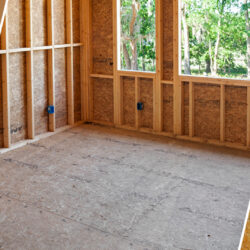More contractors and owners are taking the design-build route as a more efficient project delivery method than the traditional design-bid-build method. Design Build projects account for about 40% of non-residential construction, and researchers expect that number to grow in the next few years.[1]
With traditional design-bid-build project delivery, the owner has to manage two separate contracts – one for the designer and another for the contractor. This scenario often pits the designer and contractor against one another, especially when something goes wrong. With the design-bid method, the owner manages one contract, with a single point of responsibility.[2] That means the contractor and designer must work as a team and provide unified solutions and recommendations for the project.
Proponents of design-build say the delivery method creates a more collaborative environment with less conflict, and research shows design-build saves time and money. Design-build projects are delivered 102% faster than their design-bid-build counterparts and cost 0.3% less per square foot.[3]
The trade off for these efficiencies is that design-build projects expose contractors to more risk, given that the design-build contractor is held accountable for both the design and construction of the project – and any damages and additional costs that may arise from either aspect.
That’s why design-build projects call for extra attention to processes and details. Following some best practices can help ensure a design-build project’s success.
1. Build a team experienced with the delivery system.
You want to staff your project with a project manager and team members who are well-versed in the design-build delivery system – whether that’s through training, experience or both. Assembling a team with limited design-build expertise is a recipe for failure on this kind of project.
2. Identify risks.
Because design-build projects involve more risk for the contractor, risk management needs to be a priority. Contracts should identify significant project risks — such as the potential for damages, injuries or design flaws — and clearly spell out how to handle these risks. The contract can transfer some risks to the party most qualified to address them, such as a subcontractor. The contract should also contain a process for promptly resolving disputes.[2]
3. Have the project team meet early.
When an owner involves the primary builder and key design-build specialty contractors early in the process, it increases the likelihood of a successful project, according to the Design Build Institute of America. Core project team members should provide their input on the project in advance of the schematic design phase.
4. Build new relationships, and carry forward existing ones.
Contracting with owners and other parties you’ve worked with previously can help create a culture built on strong relationships. Then use qualifications to build trust and new relationships with owners, subcontractors and other parties.
5. Make project expectations clear.
Begin the process by getting detailed expectations from the owner from the get-go. Find out what the owner wants out of the project, and work with the owner to set goals and develop a contract that clearly states all expectations. Then carefully, and in writing, define the roles and responsibilities of each party involved in the project.
6. Recognize that design-build is different.
The contract should acknowledge the distinctive aspects of the design-build process, and how the process will differ from traditional project delivery methods.[4] Some owners seek out design-build as a faster and cheaper construction option, but don’t fully understand what the design-build process entails.
7. Plan for turnover.
There’s always a chance that some members of your construction or ownership teams will have to leave the project before its completion. That’s why succession planning is key on a design-build project. Develop a full understanding of the roles each person plays in the project so you can come up with a plan for how each role can change hands seamlessly.
8. Anticipate contract changes.
The same idea applies to change orders. Make sure the contract stipulates processes for how to handle changes to project documents and for how and when the owner should notify the contractor of these changes.
9. Communicate, communicate, communicate.
Communication is key to any project, and that’s especially true with design-build. The contract should indicate how project team members will communicate with the owner and with each other, according to DBIA best practices. Communicate early, and communicate often.
Setting a detailed plan and following best practices will yield a positive design-build experience, allowing owners get their projects completed quicker and for less money, and contractors to free up more time to take on other projects.
[1] https://www.chubb.com/US-EN/_Assets/doc/Chubb_Construction_Professional_Liability_Cyber_Risks_Advisory.pdf
[2] https://dbia.org/what-is-design-build/
[3] https://dbia.org/wp-content/uploads/2018/11/Cost_Performance_Research-CII_Pankow2018.pdf
[4] https://dbia.org/wp-content/uploads/2018/05/Best-Practices-Universally-Applicable.pdf
This article is intended solely as general information. Ultimately, the design and detailing of any project, assembly or system is the responsibility of a professional, and all projects must comply with applicable building codes and standards. For information concerning the limited warranty for the DensElement® Barrier System, visit www.denselement.com. GP Gypsum disclaims any responsibility or liability for the architecture, design, engineering or workmanship of any project, assembly or system.









